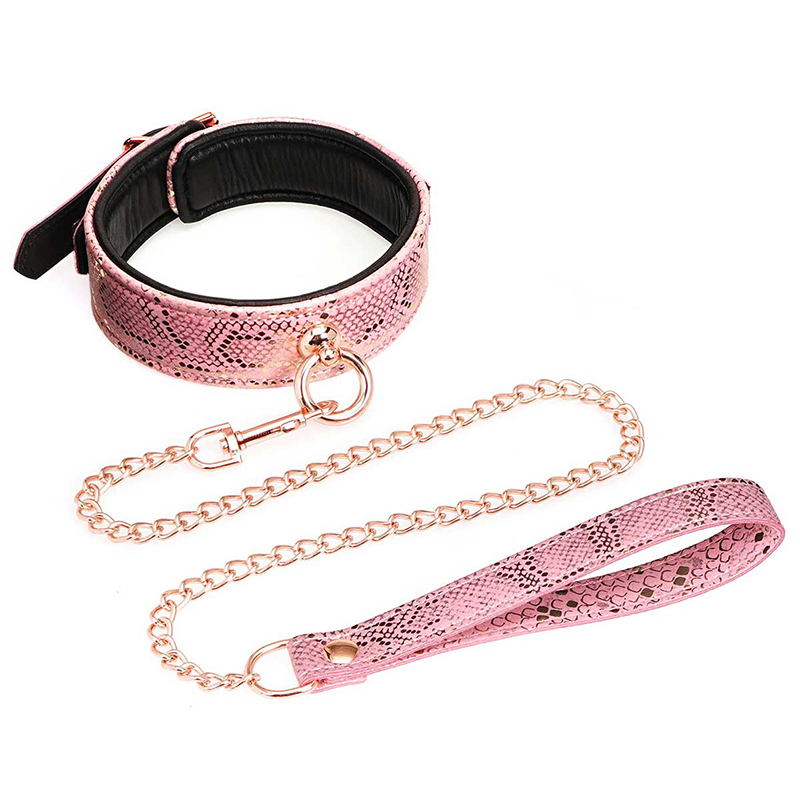The Significance and Variety of BDSM Collars: A Guide to Symbolic Bondage Wear

 The Significance and Variety of BDSM Collars: A Guide to Symbolic Bondage Wear
The Significance and Variety of BDSM Collars: A Guide to Symbolic Bondage Wear
BDSM collars hold a unique place in the world of bondage and discipline, signifying trust, commitment, and control within the dynamic of a BDSM relationship. These collars are more than just accessories; they are potent symbols of the bond between a dominant and a submissive. This blog post explores the significance, variety, and proper use of BDSM collars, helping both newcomers and seasoned practitioners understand their importance and how to choose the right one.
Understanding the Significance of BDSM Collars
In the BDSM community, a collar is much more than a simple piece of attire. It is often regarded as a symbol of ownership and submission. Wearing a collar can signify the wearer's commitment to their dominant and can be a public or private acknowledgment of their relationship dynamics. For many, the act of collaring is akin to a wedding ceremony, deeply personal and highly ceremonial.
Types of BDSM Collars
BDSM collars come in various styles, each serving different purposes and suited to different tastes and comfort levels.
Day Collars: These are subtle and can be worn in everyday situations. They often look like regular jewelry but hold special significance to those who wear them and their partners.
Play Collars: Made from durable materials like leather or rubber, these collars are designed for use during BDSM activities. They are typically thicker and more robust, often equipped with attachments for leashes or restraints.
Training Collars: Used primarily in training scenarios to teach and condition the submissive, these collars are temporary and signify that the relationship is in its developmental stages.
Protection Collars: This type implies that the submissive is under the protection of a dominant, usually in a mentorship or guardianship context rather than a romantic or sexual relationship.
Consideration Collars: Often the first type of collar used in a new BDSM relationship, a consideration collar is akin to a pre-engagement ring and is used while both parties explore their potential compatibility in a D/s dynamic.
Choosing the Right Collar
When selecting a BDSM collar, consider the following:
Material: Ensure the collar is made from a comfortable and safe material, especially if it's meant to be worn for extended periods. Leather is popular for its durability and comfort, while metal collars offer a more intense aesthetic and sensation.
Locking Mechanism: Some collars come with locks, which can enhance the sense of control and ownership. Decide if you want a collar that locks with a key or one that simply fastens.
Fit: A collar should fit well without causing discomfort or difficulty breathing. It should be snug enough to feel secure but not so tight as to be restrictive or hazardous.
Style: Choose a style that reflects the nature of your relationship and the personal tastes of the wearer. The collar should be something that the submissive is proud to wear and finds aesthetically pleasing.
Safety and Care
Safety should always be a priority when using BDSM collars. Never wear a collar too tightly, and always monitor for any signs of discomfort or distress. Communication between the dominant and submissive is crucial to ensure that the experience is safe and consensual.
Proper care of the collar depends on the material. Leather collars require regular cleaning and conditioning to maintain their quality, while metal collars may need to be polished to prevent tarnishing.
Conclusion
BDSM collars are rich in symbolism and play an essential role in the expression and dynamics of BDSM relationships. Whether you choose a collar for aesthetics, comfort, or symbolic significance, understanding the types, proper use, and safety considerations will enhance your BDSM experience and deepen the connection between the dominant and submissive. As with any element of BDSM, mutual respect, consent, and communication are the keys to a fulfilling and respectful relationship.

Leave a Comment